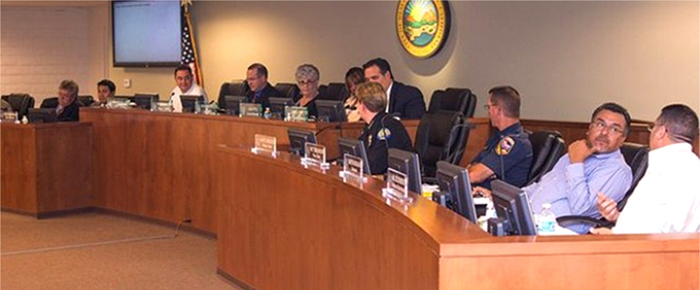
By Haddon Libby
With the City of Desert Hot Springs declaring a financial emergency and raising the possibility of a bankruptcy, it’s second in twelve years, let’s take a look at what it means when a city declares bankruptcy.
The reason for bankruptcies is simply because the municipality does not have enough cash to meet its obligations. As it relates to Desert Hot Springs, this would be due to a mix of lower property values and high unemployment as both reduced tax revenues, the loss of redevelopment funds from the state, employment contracts that pay more than the city can afford, an extended period where expenses exceeded revenues and divided leadership unable to coalesce around a sustainable budgetary plan. With city revenues of approximately $14 million and expenses of over $20 million, the city spent their cash reserves causing the current fiscal emergency.
The tricky part in understanding how so many cities such as Desert Hot Springs are in fiscal trouble relates to redevelopment funds. Redevelopment funds were monies from the state meant to increase tax revenues by taking blighted areas and redeveloping them so as to improve tax revenues. Desert Hot Springs like most cities in the state used some of these funds to cover the salaries of city workers. When the state eliminated redevelopment agencies, this generally accepted accounting approach went away and cities had to fund salaries from tax revenues. As many cities did not have other sources of revenue to cover these salaries, they drastically cut employees while instituting new taxes while trying to negotiate through the new world order of city finances.
City bankruptcies, termed Chapter 9 bankruptcies, do not extinguish debts. What Chapter 9 bankruptcies do is force the city, its employment unions and debt holders to come to the negotiating table and put together a balanced budget plan. Chapter 9 allows a city to break and renegotiate unsustainable employment contracts and unfunded obligations such as pension benefits. This is particularly important in Desert Hot Springs where the majority of the city’s employees earn pay and benefits that exceed $150,000 with a police department that pays more than one dozen positions over $200,000 a year in salary and benefits. What a bankruptcy would do is force the city to reduce the employment levels while reducing its payroll that currently equates to approximately 75% of the city’s tax revenues.
Before a bankruptcy can be declared, a city must take actions to resolve their financial problems. This can take the form of higher sales taxes, parcel taxes and other revenue creation activities. A city also needs to reduce salaries and employment levels.
Assuming a city still goes bankrupt, city residents can expect to see a reduction in services. Potholes may go unfilled, response times from emergency services may erode while garbage collection and other basic services slow.
Phil Batchelor, the interim city manager of Vallejo who helped resolve that city’s bankruptcy states that the stigma of a bankruptcy makes it more difficult to attract capital investment and new businesses to the community. One of the reasons for this, he says, is that a Chapter 9 is typically the result of “dysfunction” within the city’s management and leadership. “It makes it very difficult for people to get serious about relocating to your jurisdiction,” says Batchelor.
As for bondholders, Moody’s Investor Services states the average bondholder receives 62% of their investment. General obligation (GO) bonds and asset backed securities typically receive the highest payback rates while unsecured creditors get the lowest.
While a bankruptcy does not change the day-to-day life of most residents, it does make an economic recovery in that city more difficult – particularly if governing city leadership remains divided and in conflict.









































